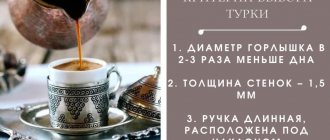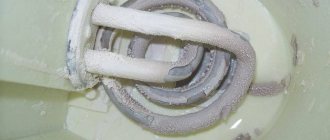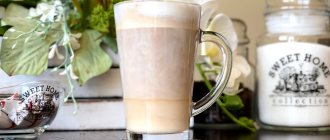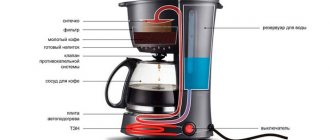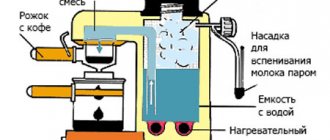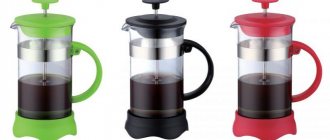Copper cookware is harmful to health. Copper utensils: benefit or harm
Copper is the best conductor of heat. Professional chefs and cooks appreciate it for its speed of response. In copper cookware, everything cooks quickly and evenly, as it evenly surrounds the food with heat. In most cases, copper utensils are produced by hand using ancient technologies.
The main advantage of copper cookware is that it allows you to cook over low to moderate heat. The thermal conductivity of copper is ten times higher than that of stainless steel and glass, and twice that of aluminum. To cook deliciously in copper cookware, you need to be careful with the fire.
It is recommended to choose a saucepan as the first copper item in the kitchen. No other can compare with it in terms of “performance”. It is easy to use and durable. Copper is a soft metal, so high-quality copper utensils should be hammered or forged, which increases the service life of the metal.
Coating
The main disadvantage of copper is rapid oxidation upon contact even with weak acidic environments. Therefore, the inside of copper cookware is usually coated with a layer of another metal. Tin is often used for these purposes, which, unlike stainless steel and nickel, can be restored. The steel and nickel plating of copper cookware is quite durable compared to pewter, but is much more expensive.
Tin melts at a temperature of 232 degrees, so for copper frying utensils - frying pans and saucepans - a steel coating would be ideal, which reduces the temperature and prevents overheating of the utensils and food.
In a copper pan there is no need for these metals because the liquid does not heat above 100 degrees.
Cookware with a hand-applied pewter plating lasts longer because the plating is thicker than with the electroplating method.
To determine if it's time to replace the tin plating on your copper cookware, apply a small amount of detergent to a small area of the plating. If copper begins to show in this area, it's time to change the coating.
If there are scratches on the coating and you are not using this cookware for cooking vegetables, take your time, the old coating will still serve.
If you cook acidic foods in a copper pan, be careful not to scratch the coating.
Uncoated copper cookware is ideal for whipping egg whites, which thicken when in contact with copper.
Many desserts are prepared only in copper dishes, since sweets do not oxidize the copper surface, and the thermal conductivity of copper allows you to quickly prepare the most capricious dishes.
For example, egg cream with sugar and wine (an exquisite Italian dessert) will not work in any other container than copper.
Lids
Professional frying pans and saucepans are usually sold without lids. If you need a lid for copper cookware, choose flat lids that fit any cookware with a smaller diameter. The coating on the lids lasts longer because it rarely comes into contact with food.
Taking care of copper cookware
Copper cookware will last longer if you use wooden or other “gentle” tools that do not scratch the copper surface and tin coating. It is not necessary to polish copper pans until they shine, just keep them clean. In addition to cleaners specifically for copper cookware, you can use a mixture of flour, salt and water.
Copper and health
To make sure that copper is good for your health, check the composition of your vitamin supplements. In many of them you will find copper.
Copper cookware cannot cause an overdose of copper, but the acid contained in some foods can react chemically with copper and change the taste and color of the dish.
This is why it is not recommended to cook vegetables in uncoated copper cookware. The tin and steel coating does not react with food and does not pose a health hazard.
For many people, the sight of a copper basin polished to a shine can bring them back to a happy childhood and remind them of the unforgettable taste of the cherry jam their grandmother brewed in it.
Others, at the sight of a copper Turk, will feel the taste of unsurpassed Turkish coffee. Today, copper cookware is again gaining extreme popularity and filling the shelves of china shops.
But at the same time, the question arises about the dangers of using copper utensils.
Copper utensils
Possible harm and benefits of use
Pure copper, when it enters the human body, does not cause any damage to it, does not accumulate and is quickly eliminated. The benefits of copper cookware have been proven through many experiments.
The bactericidal properties of copper utensils can destroy various types of influenza and the causative agent of many diseases - Staphylococcus aureus.
A lack of this substance in the body can significantly affect health.
Copper cookware set
It is also worth paying attention to information about the possible harm from using copper and brass for cooking. Pure copper or brass when in contact with certain products may cause them to oxidize.
Despite the fact that India is a leader in the use of copper utensils, it has been proven that for most infants, preparing formula in copper plates resulted in cirrhosis of the liver. This is due to the fact that the newborn’s liver cannot yet fully filter out harmful substances entering the blood and control the excess of useful ones.
Therefore, when it enters the child’s body, it begins to accumulate, causing poisoning. For the same reason, people who abuse alcohol should not drink coffee made from brass or copper.
Considering the possible negative consequences, today copper cookware made in Russia and produced in other countries is manufactured with a special internal anti-stick Teflon and ceramic coating.
Copper pan
Secrets of choosing copper cookware
Before you make a purchase, you should weigh the pros and cons of using copper in the kitchen. The advantages of copper pans:
- durability and strength, with brass even being a little stronger,
- uniform heating,
- ease of maintenance and operation,
- taste of dishes,
- wide range of choice and design.
At the same time, it is worth knowing about the disadvantages:
- You should not leave such dishes wet, because excess moisture may cause a harmful film – patina – to appear on its surface,
- the outer surface of a pan or stewpan that has not been used for a long time may darken,
- high price.
It is also worth knowing the difference between “copper cookware” and “copper coated cookware.” They differ significantly both in price and in the weight of the product.
Another effective piece of advice would be the recommendation not to use cookware manufactured in India for preparing hot food.
Indian production does not provide surface coating, and therefore such dishes are only suitable for cold dishes.
Dishes on the table
Using copper utensils correctly
In order not to spoil the expensive pan and the taste of the dishes, it is worth remembering the following operating rules:
- Forged cookware lasts the longest.
- Tinned dishes should only be used for cooking and stewing. While for frying it is necessary to purchase frying pans with steel and nickel coating.
- Brass is more suitable for making jam.
- Tinned dishes can only be cleaned with soda using soft scrapers.
- Pure copper requires more stringent care - regular cleaning with special pastes and polishes without chlorine.
- You cannot put an empty frying pan on the fire.
- Do not pour boiling water into dry dishes and add salt to the dish only after the water has boiled.
- It is forbidden to mix cooking food with metal spatulas.
- Do not wash copper cookware in dishwashers.
- Dry wet copper dishes only on racks upside down.
Drying dishes
A few words about the manufacturers
The production of copper cookware is a popular and highly profitable business today. Russian production is headed by Kolchugino.
The Kolchuginsky plant is the largest manufacturer of high-quality copper cookware, which can not only decorate any kitchen, but also make food both tasty and healthy.
Modern equipment allows you to create stylish, elegant and at the same time practical products that will serve their owners for many years. Russian production is also represented by “Azbuka Vkusa” and the “Basiliko” line.
Foreign manufacturers are represented by:
- French "De Bayer". The company is an exporter of copper products to 70 of the world's largest countries. Since their founding in the early 19th century, they have never stopped introducing new developments and improving quality.
- Japanese Supra. In addition to all kinds of equipment, not long ago Supra took up the production of copper cookware. For this purpose, a family factory of copper craftsmen, small in size, but not long in existence, was attached to the huge concern.
- Italian TVS. The products of this company can be found on store shelves anywhere in the world.
- Portuguese "Bioflon". has been in existence for more than 30 years, and during this time it has managed to become the largest manufacturer of copper cookware in Portugal.
The benefits and harms of copper cookware is a matter of concern to many people. But few people know that, along with copper utensils, lead in ceramics, stainless steel and aluminum pose a health hazard. It is also harmful to use cracked glassware and the now fashionable Teflon for cooking.
posuda.vyborkuhni.ru
More about harmful and “useful” dishes. Consequences
Source: https://www.kalinark.ru/drawers-and-bedside/mednaya-posuda-vredna-dlya-zdorovya-mednaya-posuda-polza-ili/
Tea in silver
The precious metal has been used for tableware for centuries. The court nobility of Europe and Russia always had sets for coffee and tea on the table.
The finest patterns, exquisite forms of teaware and tea drinking accessories adorned the tables of royalty from all continents, including the homeland of tea - China.
Today, many masterpieces are kept in museums and private collections, representing not only material value. True works of art, teapots and coffee pots made of silver are a whole layer of culture.
Brass coffee pot: harmful or not, pros and cons, selection rules
Any coffee lover knows that the most delicious and rich strong drink comes from Turk. The simple shape of the dish, like all ingenious things, allows the coffee not to boil violently, but to simmer on a wide bottom. At the same time, the thick head of foam retains all the richness of the aroma. But expensive copper cezves are not available to everyone, and they were replaced by Turks made of brass. What is good about this option, and how to make the right choice?
Characteristics of a brass Turk
Brass is an alloy of copper and zinc, with a few additional components. It depends on the composition what properties a cezve made from this metal will have. In general, such dishes:
- Weighty and durable. This is due to the high density of the alloy;
- Holds heat well, cools and heats up slowly.
- The body of a brass Turk is always thicker than a copper one of similar price.
Many users are concerned about the question of whether a Turk made of brass is harmful. It all depends on how often it is used. With prolonged inactivity, rust may appear on the walls of such a cezve, the alloy oxidizes and the vessel becomes unusable. Turks with an internal protective layer of silver or food-grade tin last longer and cost 10-20% more than usual.
Proper care and careful handling of cookware also increases the period of safe use. It can be washed with warm soapy water and wiped with a dry cloth.
Pros and cons of brass Turks
A brass pot has a number of advantages over other types:
- The affordable price of the alloy allows you to make brass Turks thick-walled, regular, spherical in shape. This has a positive effect on the final quality of the prepared product;
- Good thermal conductivity. The liquid in such a Turk heats up quickly, but does not boil. As a result, the grains are extracted, gradually releasing the full taste and aroma.
- Attractive design. Brass is a flexible and ductile material, so the surface of such a pot is often decorated with intricate patterns or polished to a shine.
- Durable and reliable, easy to care for, do not require special maintenance conditions.
- A wide range of. It is quite easy to find a brass cezve of a classic shape of any volume, from 100 to 500 ml.
At the same time, a Turk made from such an alloy must be constantly used to avoid oxidation of the internal walls. Cleaning your dishes periodically will prevent premature damage to your dishes, but it will require some effort.
You can brew coffee in a brass pot on an induction cooker if the model is equipped with a special ferromagnetic bottom. When purchasing, you should pay attention to the product labeling - Induction. Otherwise, the induction surface simply does not “recognize” such cookware.
The presence of an induction ferromagnetic disk, which serves as an adapter, allows you to use any type of cookware. For true fans of Turkish coffee, the method of brewing it on sand in a frying pan with a magnetic bottom is suitable.
How to choose a brass Turk
There are a number of characteristics that are worth paying attention to when purchasing any Turk, and brass is no exception.
Utensil shape
A good brass coffee pot has classic, time-tested proportions: a wide flat bottom and a narrow neck, in a 3:1 ratio. In addition, coffee grounds quickly flow down the cone-shaped walls and enter the cup in a minimal amount.
Thickness of the bottom and walls of the cookware
Only in a thick-walled cezve can you brew coffee slowly, through gradual extraction. The minimum acceptable wall thickness is 1.5-2 mm. Brass Indian Turks are always heavier than similar ones from a domestic manufacturer. For gourmets who brew coffee slowly on a sand bed, Turkish brass Turks with a very thick bottom up to 1 cm thick are more suitable.
Inner coating
A high-quality silver or tin coating will increase the price, but such a cezve will last longer. When purchasing, you should pay attention to the integrity and absence of chips on the walls, and the quality of polishing on the neck.
Comfortable handle
Choosing a brass Turk with a metal handle would be a big mistake. A self-respecting manufacturer always installs a wooden handle and firmly attaches it to the body.
Volume
Coffee brewed in large portions does not have a sufficiently rich taste and aroma. If you need to brew large volumes, it is recommended to choose two cezves of the required capacity. The optimal figure is 200 ml.
Turks may vary in shape and size
Alternative Turkish materials - what to choose
Undoubtedly, the best strong coffee is obtained from expensive copper Turks. But there are many other options for any wallet made from other materials:
- ceramic cezves. Affordable, they retain all the properties of coffee beans well during brewing. They are fragile and require careful handling;
- aluminum. Affordable, budget option. Strong and durable, but the metal itself is very soft. Failure to comply with the proportions (neck and bottom of the same shape) does not affect the drink for the better;
- bronze. Expensive, durable and durable material with good thermal conductivity. The coffee in such cezves turns out tasty and aromatic.
- clay. Affordable and environmentally friendly material has made such cezves quite popular. Unfortunately, the porous structure of the walls absorbs odors well, so this pot is only suitable for brewing one type of bean.
A brass pot will be a good alternative to a copper one - affordable price, correct shape, attractive design, long service life. The main condition is to take a responsible approach to choosing a cezve and take into account all the parameters when purchasing.
Reviews
Maria, housewife, 37 years old:
The Brass Turk was a real discovery for me - the coffee in it is delicious, the individual bouquet of each variety is fully revealed. The price was pleasant, and it was very easy to clean.
Alena, 21 years old, student:
I received Turka as a gift and was very pleased. Beautiful, graceful. I've been using it for over a year now and it still hasn't lost its shine. Thanks to the narrow neck, foam does not spill onto the stove, everything is clean and fast.
Vladimir, 30 years old, single:
I was given a ceramic cezve, and while I was interested in brewing coffee in a new Turk, my old brass one stood in the closet for several months without use. The inner coating has darkened due to oxidation, it’s easier to throw it away completely than to go through the hassle of washing it.
Source: https://okoffe.ru/turka-iz-latuni/
Stainless steel - today and tomorrow teapots
The world's largest companies producing kitchen utensils are adding stainless steel items to their lines.
Fans of one brand or another will choose a teapot of any modification:
- with or without a whistle;
- with a filter, strainer, press or without additional elements;
- electric or for a stove (from gas to induction).
When choosing a stainless steel kettle, you need to make sure that the alloy grade is NZhS 18/10. This species has the best performance. Marking option: aisi 304. Chrome plating protects steel from corrosion. And the carbon in the composition makes the material stronger.
What are the advantages of stainless steel and teapots made from it:
- the alloy is absolutely inert - there will be no impurities in the water. The smell and taste will not be affected either;
- aesthetically looks flawless, fitting into any environment. You can buy a shiny or matte teapot;
- not afraid of temperature changes;
- tolerates exposure to alkalis and acids;
- lasts a long time.
Among the disadvantages, they note the loss of decorativeness when the chrome surface is damaged by sharp objects. But this already depends on the neatness of the household.
Daily care of stainless steel is simple:
- rinse the teapot, freeing it from tea leaves;
- wash the walls with a soft sponge and detergent;
- After washing off the soap under running water, wipe dry with a soft towel.
Video with recommendations on how to clean carbon deposits from dishes made of NJS:
And we offer several more options for how to clean the outside of dishes from grease.
Is brass harmful to health - Metalworker's Handbook
Any coffee lover knows that the most delicious and rich strong drink comes from Turk. The simple shape of the dish, like all ingenious things, allows the coffee not to boil violently, but to simmer on a wide bottom. At the same time, the thick head of foam retains all the richness of the aroma. But expensive copper cezves are not available to everyone, and they were replaced by Turks made of brass. What is good about this option, and how to make the right choice?
Copper cookware is harmful to health
For any housewife, good dishes are a source of special pride, because she uses them to prepare a dish for the whole family every day and create another culinary masterpiece. There is no shame in putting this on open shelves as decoration.
Therefore, many have a very reverent attitude towards these household items and a careful approach to their selection. When quality is put in first place, even before purchasing, the question of what metal certain interior and everyday items are made of is studied in detail. There is an opinion that, for example, copper cookware is harmful to health.
In this article we will try to understand such an important issue for the whole family.
Copper as a decorative element
Copper is a metal that has deservedly become popular. It is attractive and recognizable, easy to process, which means it can be given completely different shapes. Designers love it for this feature and actively use copper in the interior of apartments and houses:
- If your home is decorated in Loft or Retro style, copper elements will harmoniously fit into the interior. These can be either drainpipes on a rough surface that imitates brickwork, or open wiring.
- Copper lamps are used everywhere in the interior. They will look great both in the office and in the living room. A combination with soft textures, for example, with a voluminous blanket on a sofa or armchair, will add special chic.
- Whole sheets of this metal are used to decorate walls in styles such as Minimalism or Neoclassicism. With the help of a perfectly polished surface, you can get the effect of visually expanding the space, because it will reflect the sun's rays and fill the room with light.
- Copper baths and sinks are not only stylish, but also practical, since the metal is not afraid of water and does not corrode.
- Lately, copper furniture has come into fashion. The chairs are suitable for a dining room or office, and a bed with a copper headboard has long been a fixture in bedrooms designed in a modern style.
Source: https://ssk2121.com/vredna-li-latun-dlya-zdorovya/
Why were these particular materials chosen?
The Turk is made from copper, brass or steel. Such a set of materials is easy to explain.
Copper, as the softest and most pliable material, was best suited for creating the very first dalla - the ancestor of the device familiar to us.
- Brass is the successor to copper, surpassing it in a number of characteristics, which we will talk about a little later.
- Steel is the most modern material from which most cookware is made. Turka was no exception.
To be fair, it should be said that other metals are also used for production, for example, aluminum or even silver, but they are much less likely to be found on sale.

